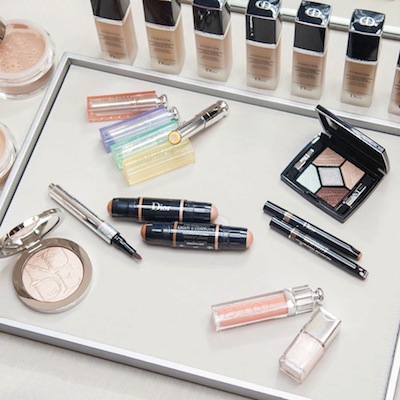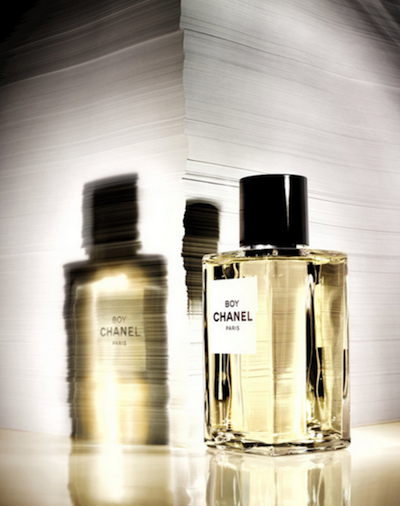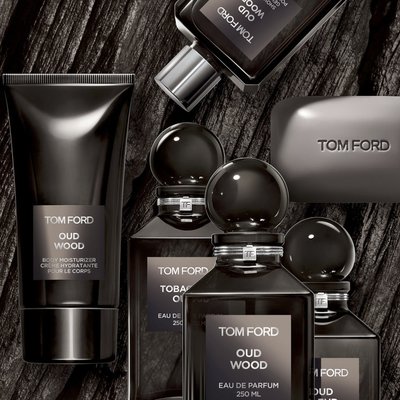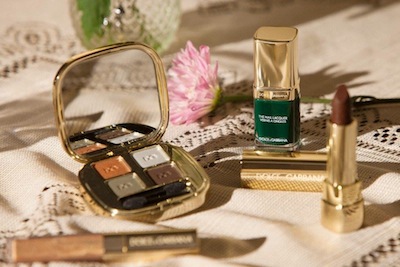 Dolce & Gabbana beauty, summer 2016
Dolce & Gabbana beauty, summer 2016
Fragrances have long been the predominant form of fashion licensing, but color cosmetics developed by luxury brands are quickly increasing market penetration, according to a new report from Euromonitor. Euromonitor’s “Global Licensing Trends in Beauty and Personal Care” report examines which licensing categories are poised to continue to grow and how specific markets respond to the marketing campaigns created for products introduced by fashion brands. While fragrances have been an intrinsic aspect of fashion offerings for decades, a draw toward color cosmetics has increased with brands such as Gucci and Marc Jacobs launching collections in the last few years.
"Until the last decade or so, few consumers in India, China, Brazil or Russia could afford fashion or celebrity endorsed licensed fragrances," said Utku Tansel, licensing strategy analyst at Euromonitor.
"The rise of these emerging market economies, however, has fueled burgeoning middle classes, increased access to higher-end goods, and, arguably, a more materialistic mindset," he said.
What's in your makeup bag? Fashion and beauty have historically gone hand-in-hand. Often, the beauty looks seen on the runway during collection presentations become cosmetic trends embraced by consumers. For consumers outside the price tag of high-end fashion, a gravitation toward fragrance and color cosmetics developed by brands is well founded. The purchase of a perfume or lipstick, for instance, allows the consumer to own a part of the brand without a hefty investment. Euromonitor found that in 2015, the top two fashion brands in beauty were Chanel and Christian Dior, ranking 17th and 24th, respectively. Chanel and Christian Dior, who both offer a number of fragrances and a full skincare and cosmetics range, have fortified the relationship between fashion and beauty licenses. Christian Dior's beauty collection for cruise 2016
Consumer loyalty is also strong within the beauty and personal care categories. Nearly 45 percent of respondents told Euromonitor they are faithful to a specific luxury beauty brand and 40 percent show loyalty to a certain fragrance brand.
Per Euromonitor, fragrance licensing is the third largest category in the beauty and personal care sector. The category grew 6.2 percent to reach a sales value of $45.7 million in 2015.
Similar to current fashion trends, genderless or unisex fragrances are performing particularly well. The fragrance type’s value terms grew by one fifth in 2015 and is projected to record a 17 percent CAGR by 2020.
Chanel, for example, recently launched a unisex fragrance inspired by brand founder Gabrielle “Coco” Chanel’s soul mate in a scent named for his nickname, “Boy” (see story).
Christian Dior's beauty collection for cruise 2016
Consumer loyalty is also strong within the beauty and personal care categories. Nearly 45 percent of respondents told Euromonitor they are faithful to a specific luxury beauty brand and 40 percent show loyalty to a certain fragrance brand.
Per Euromonitor, fragrance licensing is the third largest category in the beauty and personal care sector. The category grew 6.2 percent to reach a sales value of $45.7 million in 2015.
Similar to current fashion trends, genderless or unisex fragrances are performing particularly well. The fragrance type’s value terms grew by one fifth in 2015 and is projected to record a 17 percent CAGR by 2020.
Chanel, for example, recently launched a unisex fragrance inspired by brand founder Gabrielle “Coco” Chanel’s soul mate in a scent named for his nickname, “Boy” (see story).
 Chanel's Boy, a unisex fragrance
Women’s fragrances are considered the most dynamic and will generated an estimated $2.609 million in global sales by the end of the decade.
Acknowledging aspirational consumers’ desire to own high-end fashion fragrances, a number of brands have introduced scents that are low-cost alternatives to eau de parfum. Giorgio Armani and YSL Beauty have take this approach to lowering prices, but maintaining demand and increasing product portfolios, with scents such as Acqua di Gioia Eau Fraiche and L’Homme Libre Cologne Tonic, respectively.
Likewise, moving outside traditional perfumery and into items such as shower gels and body lotions contains growth potential for fragrance licenses. As with low-cost perfume alternatives, these products create access points for younger, aspirational consumers.
But, to truly stand out in an extremely crowded space, one that sees hundreds of new launches each year, brands must invest time and resources into their licensing programs regardless of the end result commanding a high price.
Regarding regions, Euromonitor projects the Middle East and Africa as the fastest growing market for premium fragrances between 2015 and 2020, with Saudi Arabia being the second largest contributor to premium fragrances by decade’s end.
In these markets, local perfumeries perform better because heavily scented fragrances are more in line with consumer preferences. This has resulted in brands such as Tom Ford and Armani Collection increasing the use of oud in their scents.
Chanel's Boy, a unisex fragrance
Women’s fragrances are considered the most dynamic and will generated an estimated $2.609 million in global sales by the end of the decade.
Acknowledging aspirational consumers’ desire to own high-end fashion fragrances, a number of brands have introduced scents that are low-cost alternatives to eau de parfum. Giorgio Armani and YSL Beauty have take this approach to lowering prices, but maintaining demand and increasing product portfolios, with scents such as Acqua di Gioia Eau Fraiche and L’Homme Libre Cologne Tonic, respectively.
Likewise, moving outside traditional perfumery and into items such as shower gels and body lotions contains growth potential for fragrance licenses. As with low-cost perfume alternatives, these products create access points for younger, aspirational consumers.
But, to truly stand out in an extremely crowded space, one that sees hundreds of new launches each year, brands must invest time and resources into their licensing programs regardless of the end result commanding a high price.
Regarding regions, Euromonitor projects the Middle East and Africa as the fastest growing market for premium fragrances between 2015 and 2020, with Saudi Arabia being the second largest contributor to premium fragrances by decade’s end.
In these markets, local perfumeries perform better because heavily scented fragrances are more in line with consumer preferences. This has resulted in brands such as Tom Ford and Armani Collection increasing the use of oud in their scents.
 Tom Ford's Oud Wood fragrance collection
Color cosmetics has seen the second highest penetration of fashion brands after fragrances. In 2015, color cosmetics was the second most dynamic category overall, with a 6.5 percent value growth and total sales of $56.590 million.
By item, lip products are the fastest growing category with a value growth of 8.5 percent. Face makeup will add $4.096 million to the global sales of the category by 2020.
Color cosmetics have emerged as the second most popular choice for fashion brands looking to expand further into personal care licensing. Color cosmetics are far less explored than fragrances, with only a small group of fashion brands listing in the top 20 global ranking.
Commonly, brands that do have color cosmetics create products, such as lip colors or eyeshadow palettes, that are a direct reflection of what walked down their runways. Another approach is by season with bold, dark colors for fall and warmer shades used for the warmer seasons.
Tom Ford's Oud Wood fragrance collection
Color cosmetics has seen the second highest penetration of fashion brands after fragrances. In 2015, color cosmetics was the second most dynamic category overall, with a 6.5 percent value growth and total sales of $56.590 million.
By item, lip products are the fastest growing category with a value growth of 8.5 percent. Face makeup will add $4.096 million to the global sales of the category by 2020.
Color cosmetics have emerged as the second most popular choice for fashion brands looking to expand further into personal care licensing. Color cosmetics are far less explored than fragrances, with only a small group of fashion brands listing in the top 20 global ranking.
Commonly, brands that do have color cosmetics create products, such as lip colors or eyeshadow palettes, that are a direct reflection of what walked down their runways. Another approach is by season with bold, dark colors for fall and warmer shades used for the warmer seasons.
 Dolce & Gabbana's fall/winter 2016 beauty collection
More so than fragrances, color cosmetics highlight a brand’s creativity and explores the parallels between fashion and beauty in a tangible way.
Elsewhere at the beauty counter
Euromonitor notes that fashion brands have opportunities beyond fragrance and color cosmetics. Research suggests that hair care and men’s grooming products have the potential for success.
For instance, in 2014, U.S. label Tom Ford shared its namesake founder’s dressing regimen and philosophy with a social video for its then-new men’s grooming collection
The video briefly described the products included in the collection before Mr. Ford gave tips for men wanting to look their best. Having the video narrated by Mr. Ford, rather than a model or celebrity ambassador, made the connection fostered by the video more authentic.
At launch, Tom Ford’s grooming collection ranged in price from $25 to $150 and joined its well-established men’s fragrance portfolio. Estee Lauder is the licensee of Tom Ford fragrances and grooming products (see story).
A desire for luxury products is increasing mainly in emerging markets that are just now gaining middle class status and the disposable income needed.
Dolce & Gabbana's fall/winter 2016 beauty collection
More so than fragrances, color cosmetics highlight a brand’s creativity and explores the parallels between fashion and beauty in a tangible way.
Elsewhere at the beauty counter
Euromonitor notes that fashion brands have opportunities beyond fragrance and color cosmetics. Research suggests that hair care and men’s grooming products have the potential for success.
For instance, in 2014, U.S. label Tom Ford shared its namesake founder’s dressing regimen and philosophy with a social video for its then-new men’s grooming collection
The video briefly described the products included in the collection before Mr. Ford gave tips for men wanting to look their best. Having the video narrated by Mr. Ford, rather than a model or celebrity ambassador, made the connection fostered by the video more authentic.
At launch, Tom Ford’s grooming collection ranged in price from $25 to $150 and joined its well-established men’s fragrance portfolio. Estee Lauder is the licensee of Tom Ford fragrances and grooming products (see story).
A desire for luxury products is increasing mainly in emerging markets that are just now gaining middle class status and the disposable income needed.
"Internet-connected emerging market consumers are more likely than their developed market counterparts to enjoy trying and buying new things," Mr. Tansel said. "They are also more receptive to branded goods than non-branded alternatives.
"These could be as an example of conspicuous consumption to stand apart from the crowd and gain external validation," he said. "Whatever the main initiative is, it is good news for new licensed franchises looking to gain a foothold in emerging countries.
"However, they are also more likely to prefer buying things with some cachet. Euromonitor International’s Global Consumer Trends Survey 2015 highlights that consumers in emerging markets were twice as likely as those in developed markets to say they prefer brand names to less expensive alternatives, with Chinese and Indian consumers the most inclined to favor branded goods."
